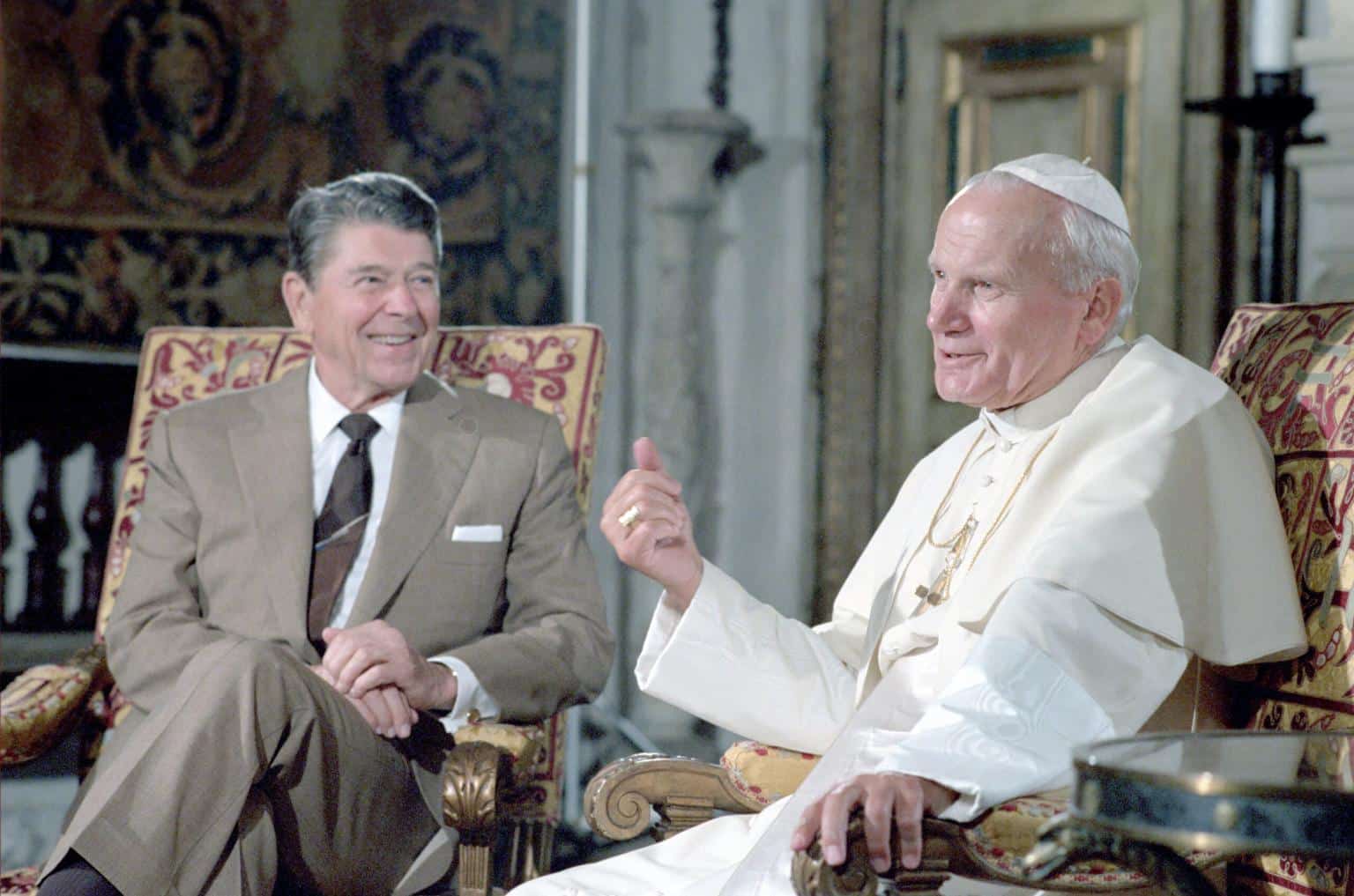A new exhibition opening in the US seeks to highlight the close bond and collaborative spirit that existed between two of the biggest personalities on the world stage during the 1980s – one of them representing the Church and the other representing the State – and a pivotal period in global politics: Pope John Paul II and President Ronald Reagan.
On 31 August the Ronald Reagan Presidential Library in Simi Valley, California, will open its doors on “The Pope and the President” exhibition. Organised by the Ronald Reagan Presidential Foundation & Institute, the exhibit seeks to “share the story of President Reagan and Pope John Paul II’s collaboration, friendship and legacies,” states the institute. It will also "feature many items [from] throughout their relationship".
Pope John Paul II and Reagan met with each other five times. Their first meeting was at the Vatican on 7 June 1982. They met for the second time in Fairbanks, Alaska, on 2 May 1984; and for a third time in Miami on 10 September 1987. Their last meeting together was back at the Vatican on 6 June 1987. The meetings were held in private – as is the case with the majority of, if not all, meetings that pontiffs have with world leaders – and not recorded, so the specifics of their conversations are relatively unknown.
That said, their mutual desires for peace and an end to communism are well documented.
Daniel Philpott, a professor of political science at the University Notre Dame, told <em>Crux</em> in an email that the friendship between Pope John Paul II and Reagan “is the most consequential of any between a sitting US president and a pope".
“It was a kinship between two souls who shared the same moral vision. Unlike people who surrounded them, both on the Right and the Left, each of them believed that Communism in the Eastern Bloc could come to an end – not sustained through conflict resolution methods, not defeated through war, but rather transformed peaceful,” Philpott said.
“Together, they duelled [with] Eastern Bloc dictators through the power of human dignity, human rights and the Spirit of God, but also remained open to negotiation and insisted on peaceful change. These friends admired and respected each other greatly.”
On the occasion of Pope John Paul II’s 1984 visit to Fairbanks, Alaska, at the start of a trip to Far East nations, President Ronald Reagan highlighted the pontiff’s work to ensure “rights and dignity of the individual and for peace among nations", and committed the United States to that same cause.
“In a violent world, Your Holiness, you have been a minister of peace and love. Your words, your prayers, your example have made you – for those who suffer oppression or the violence of war – a source of solace, inspiration, and hope,” Reagan said. “For this historic ministry the American people are grateful to you, and we wish you every encouragement in your journeys for peace and understanding in the world.”
In his own remarks, Pope John Paul II acknowledged that Reagan was recently returning from his own “mission of peace” – as Reagan had described it – in China, and thanked the president for his kind welcome and reaffirmed their friendship. He also echoed the sentiment about the importance of justice and peace, saying that they provide "the context in which each person, each family, each ethnic group is challenged to live in harmony and concord".
The relationship between the two men that began in 1982 helped to restore diplomatic ties between the United States and the Vatican in 1984, and arguably also helped to contribute to the collapse of the Soviet Union, given the key roles that both men played in that defeat at an individual level.
The exhibit will run through 27 October. It will feature eight overview panels, each dedicated to a different chapter of Saint Pope John Paul II’s life. The time period covered by the panels begin with the Pope's childhood, and include when he joined the priesthood, as well as his first meeting with Reagan.
The night before the exhibit’s debut, the institute will unveil a bronze bust of Saint Pope John Paul II, gifted by the Friends of John Pail II foundation and sculpted by US sculptor Gordon Kray. Following the exhibit’s completion, the bust will remain permanently on display at the Reagan Library, according to the institute.
Melissa Griller, chief marketing office of the institute, said in a 27 August statement that the exhibit “highlights the significant ways in which [the two men's] paths converged to have a profound impact on modern history.
“The diplomacy between President Reagan and Saint Pope John Paul II contributed to the downfall of communism and the freedom that the modern world enjoys today, and it’s important we remember and celebrate their lasting impact." <br><br>In contrast to such sentiments, the exhibit will occur at the same time that two wars rage on – one in Ukraine and one in Gaza – during each of which there has appeared to be far less, if any, discussion and cooperation on the issue of achieving peace between the current US presidency of Joe Biden and the pontificacy of Pope Francis. <br><br><strong><em>RELATED: <mark style="background-color:rgba(0, 0, 0, 0)" class="has-inline-color has-vivid-cyan-blue-color"><a href="https://catholicherald.co.uk/critics-of-the-pope-as-a-meek-white-flag-waving-peacenik-miss-how-victory-can-lie-in-unexpected-places/?swcfpc=1">Critics who paint the Pope as a ‘meek’ peacenik over Ukraine fail to see how victory can lie in unexpected places</a> </mark></em></strong><br><br><em>Photo: President Ronald Reagan and Pope John Paul II sitting in a pair of Louis XIV-style armchairs that will be on display in the 'The Pope and The President' exhibit at the Reagan Library. (Credit: Ronald Reagan Presidential Foundation & Institute.)</em>


